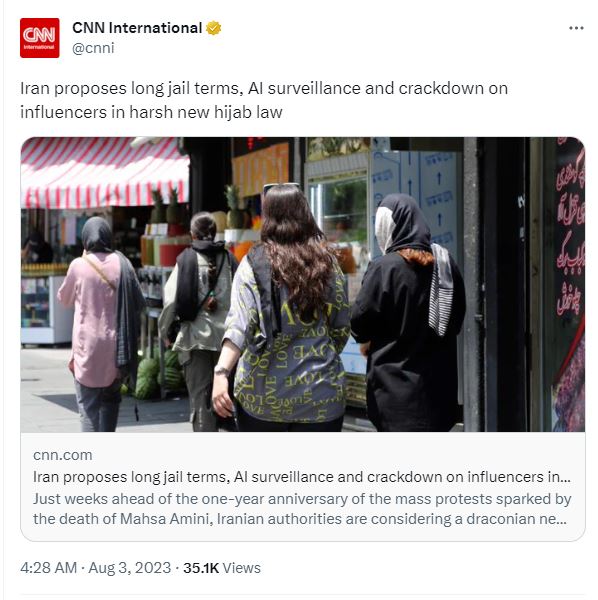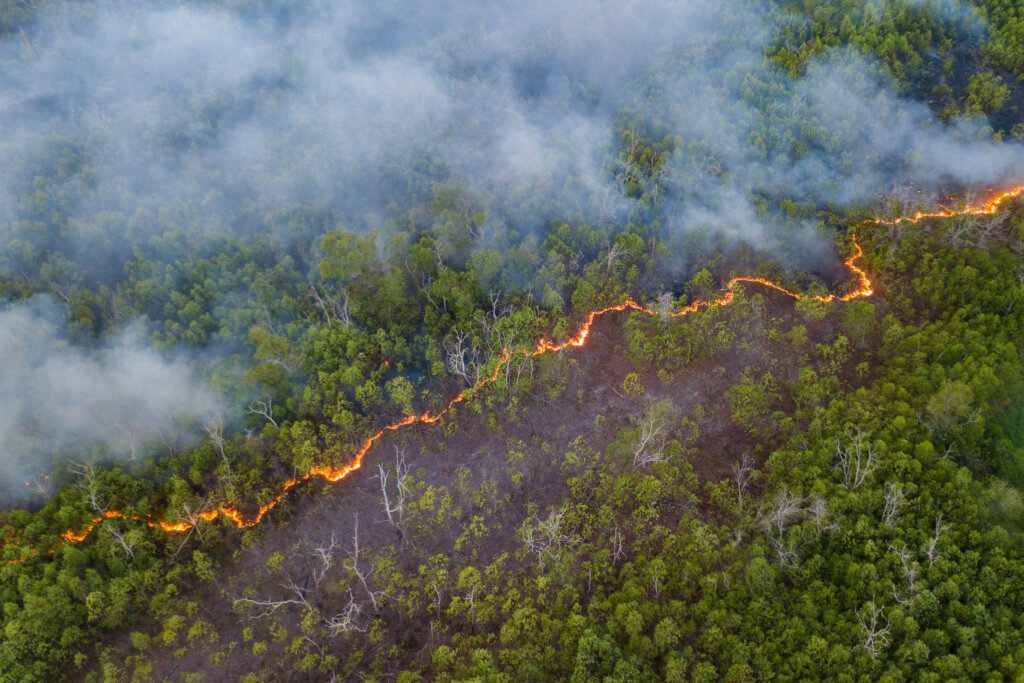
Australia hopes AI cameras can help it detech bushfires faster. (Image – Shutterstock)
Are AI cameras the future of nature surveillance?
|
Getting your Trinity Audio player ready... |
- Apart from improving images, AI cameras are being used for surveillance as well.
- Despite concerns, some countries continue to use AI cameras to police their citizens.
- But AI cameras can also be used for nature surveillance as Australia’s unveils bushfire camera network.
Artificial intelligence (AI) in cameras is just one of the many use cases that are becoming increasingly popular among businesses today. Today, most mobile phone cameras have AI built into their system. These functions include edge detection for portraits, beautifying, angle suggestions and even enhancing color profiles, among other things.
Put simply, AI cameras use AI to identify the subject and location of a shot and automatically adjust the settings to enhance the quality of the images. Some applications like Instagram, Snapchat and TikTok use AI to create filters that generate different styles of images as well.
The outlook for AI cameras appears optimistic, presenting various prospects across public and private domains, retail, financial services, healthcare, automotive, legal, and educational fields. Projections indicate that the worldwide AI camera market is poised to attain an approximate value of US$23.3 billion by 2028, displaying a CAGR of 14.6% from 2023 to 2028.
Apart from smartphones, key factors contributing to this market’s expansion include the rising demand for AI-driven cameras in smart residences and a growing necessity for AI-enhanced surveillance to document and pre-empt criminal activities, as well as potential acts of terrorism.
For example, facial and image detection solutions on cameras help detect human and object movements. These use cases are already being used for traffic cameras as well as in the manufacturing industry.

Like China, Iran also plans to use AI cameras for surveillance to monitor citizens.
AI cameras for surveillance
However, the use of AI cameras for surveillance has raised some concerns. There have been reports that AI cameras could be a violation of privacy, especially with its detection tools. In France, under a recent law, police will be able to use CCTV algorithms to pick up anomalies such as crowd rushes, fights, or unattended bags.
While the law explicitly rules out using facial recognition technology in order to trace suspicious individuals, opponents say it is a thin end of the wedge. In a report by the BBC, even though the experimental period allowed by the law ends in March 2025, opponents fear the French government’s real aim is to make the new security provisions permanent.
“We’ve seen this before at previous Olympic Games like in Japan, Brazil and Greece. What were supposed to be special security arrangements for the special circumstances of the games, ended up being normalized,” Noémie Levain, of the digital rights campaign group La Quadrature du Net (Squaring the Web) said to the BBC.
A version of the new AI security system is already in place in some police stations around France. One of the pioneers is the southern Paris suburb of Massy.
Meanwhile, China, which is known for its surveillance of citizens, has thousands of AI cameras. Among the use cases for AI cameras include managing its citizens’ behaviors. AI cameras situated at pedestrian crossings in Shanghai film anyone crossing or walking in the street or road unlawfully. A huge LED screen will then display the name and face of the individual that just jaywalked across the street and publicly shames the person for everyone to see.
Interestingly, several Chinese graduate students have invented a coat that can hide the human body from these AI cameras. Known as the InvisDefense, the coat can be seen by human eyes but is covered in a pattern that blinds cameras during the day and sends out unusual heat signals at night, according to the team.
The South China Morning Post reported that their work won first prize in a creative work contest last year which was sponsored by Huawei Technologies as part of the China Postgraduate Innovation and Practice Competitions.

Australia has one of the worst bushfires on the planet. (Image – Shutterstock)
Nature surveillance
Over in Australia, the expansive region known as the Green Triangle, which covers the southeastern part of South Australia and the southwestern area of Victoria, is set to become the site of Australia’s most extensive camera-based wildfire detection network. This technological investment serves the vital purpose of rapidly and accurately identifying fires, thus safeguarding both local communities and the significant plantation forest industry that thrives in the area.
Encompassing a network of 14 locations, Pano AI, a wildfire detection startup that uses deep learning AI and computer vision, will automatically detect, verify and classify wildfire events in real-time. A report by Tech Business News states that the tech company offers a comprehensive and ready-to-use solution that seamlessly integrates cutting-edge high-definition cameras, satellite data feeds, advanced artificial intelligence algorithms, and contemporary cloud software. This integration facilitates the swift and precise detection of emerging fires, allowing timely alerts to be sent to firefighting professionals within a matter of minutes.
Pano AI is presently active in both Australia and the United States, actively monitoring an expansive land area exceeding 2.4 million hectares. Across four Australian states—New South Wales, Queensland, South Australia, and Victoria—Pano’s services are in operation, contributing to the heightened safety and protection of these regions. In the US, the company provides service in six states – California, Colorado, Oregon, Washington, Idaho, and Montana.
By leveraging the power of AI and technology, these cameras hold the promise of reducing the devastating impact of wildfires and safeguarding both human lives and natural habitats.
READ MORE
- Safer Automation: How Sophic and Firmus Succeeded in Malaysia with MDEC’s Support
- Privilege granted, not gained: Intelligent authorization for enhanced infrastructure productivity
- Low-Code produces the Proof-of-Possibilities
- New Wearables Enable Staff to Work Faster and Safer
- Experts weigh in on Oracle’s departure from adland


